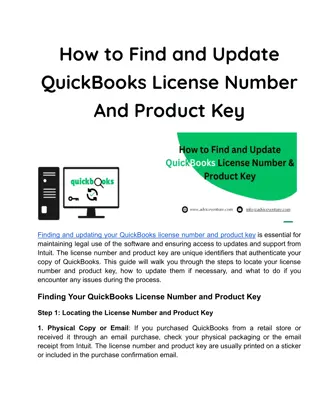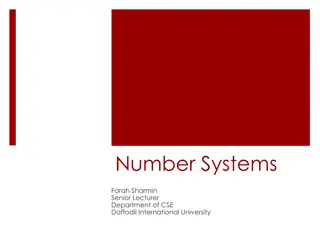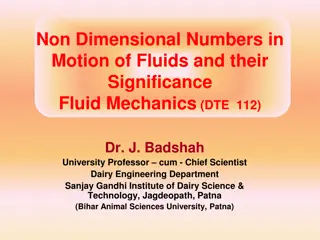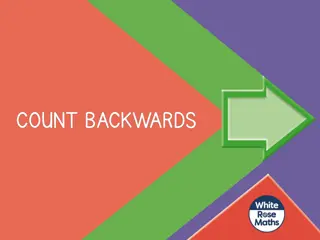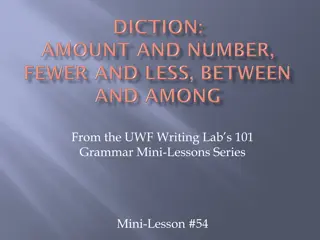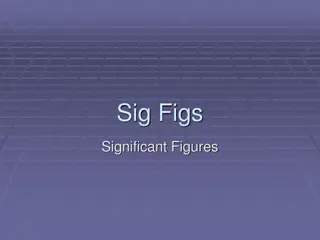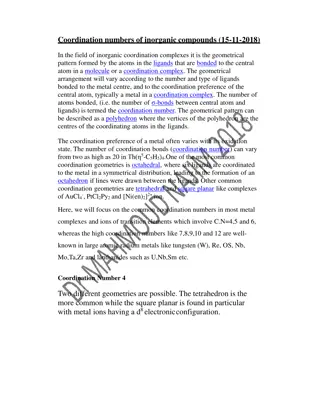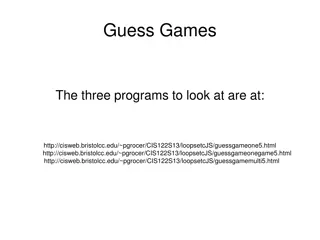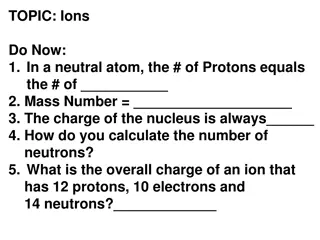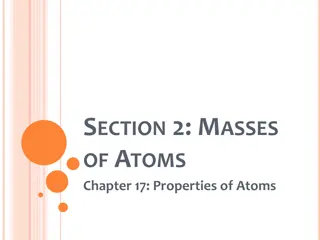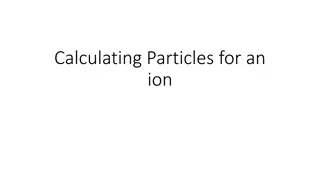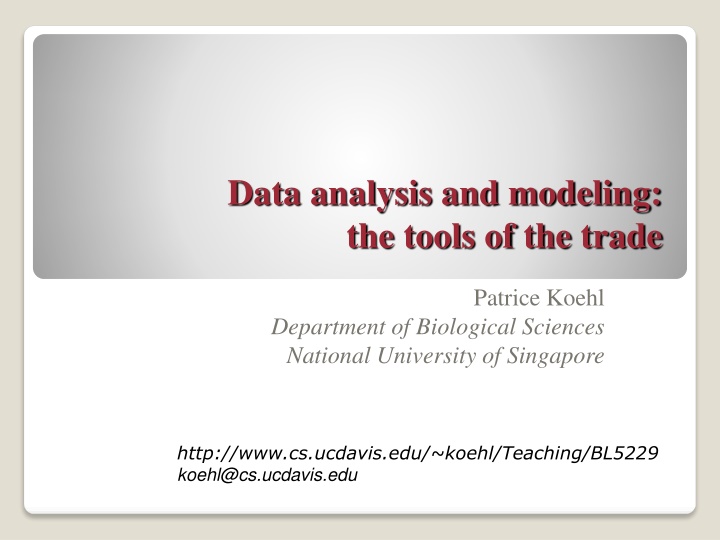
Data Analysis and Modeling Tools: Techniques and Applications
Explore the fundamental tools of data analysis and modeling including number representations, binary systems, and floating points. Learn about base conversion, vectors, and matrices essential in computational sciences.
Download Presentation

Please find below an Image/Link to download the presentation.
The content on the website is provided AS IS for your information and personal use only. It may not be sold, licensed, or shared on other websites without obtaining consent from the author. If you encounter any issues during the download, it is possible that the publisher has removed the file from their server.
You are allowed to download the files provided on this website for personal or commercial use, subject to the condition that they are used lawfully. All files are the property of their respective owners.
The content on the website is provided AS IS for your information and personal use only. It may not be sold, licensed, or shared on other websites without obtaining consent from the author.
E N D
Presentation Transcript
Data analysis and modeling: the tools of the trade Patrice Koehl Department of Biological Sciences National University of Singapore http://www.cs.ucdavis.edu/~koehl/Teaching/BL5229 koehl@cs.ucdavis.edu
Tools of the trade Set of numbers Binary representation of numbers Floating points Digital sound Vectors and matrices
Tools of the trade Set of numbers
Tools of the trade Binary representation of numbers
Number representation We are used to counting in base 10: 1000 100 10 1 103 102 101 100 .. thousands hundreds tens units Example: digits 1 7 3 10 2 1 1000 100 1x1000+7x100+3x10+2x1 = 1732
Number representation Computers use a different system: base 2: 1024 512 256 128 64 32 16 8 4 2 1 210 29 28 27 26 25 24 23 22 21 20 Example: 1 1 0 1 1 0 0 0 1 0 0 bits 1024 512 256 128 64 32 16 8 4 2 1 1x1024+1x512+0x256+1x128+1x64+0x32+ 0x16+ 0x8 + 1x4 + 0x2 + 0x1 = 1732
Number representation Base 10 0 1 2 3 4 5 6 253 254 255 Base 2 0 1 10 11 100 101 110 11111101 11111110 11111111
Conversion From base 2 to base 10: 1 1 1 0 1 0 1 0 1 0 0 1024 512 256 128 64 32 16 8 4 2 1 1x1024+1x512+1x256+0x128+1x64+0x32+ 1x16+ 0x8 + 1x4 + 0x2 + 0x1 = 1876 From base 10 to base 2: 1877 %2 = 938 Remainder 1 938 %2 = 469 Remainder 0 469 %2 = 234 Remainder 1 234 %2 = 117 Remainder 0 117 %2 = 58 Remainder 1 58 %2 = 29 Remainder 0 29 %2 = 14 Remainder 1 14 %2 = 7 Remainder 0 7 %2 = 3 Remainder 1 3 %2 = 1 Remainder 1 1 %2 = 0 Remainder 1 1877 (base10) = 11101010101 (base 2)
Tools of the trade Floating points Digital sound
IEEE Floating Point IEEE Standard 754 Established in 1985 as uniform standard for floating point arithmetic Before that, many idiosyncratic formats Supported by all major CPUs Driven by Numerical Concerns Nice standards for rounding, overflow, underflow Hard to make go fast Numerical analysts predominated over hardware types in defining standard
Floating Point Representation Numerical Form 1s M 2E Sign bit s determines whether number is negative or positive Significand Mnormally a fractional value in range [1.0,2.0). Exponent E weights value by power of two Encoding s exp frac MSB is sign bit exp field encodes E frac field encodes M
Floating Point Precisions s exp frac Encoding MSB is sign bit exp field encodes E frac field encodes M Sizes Single precision: 8 exp bits, 23 frac bits (32 bits total) Double precision: 11 exp bits, 52 frac bits (64 bits total) Extended precision: 15 exp bits, 63 frac bits Only found in Intel-compatible machines Stored in 80 bits (1 bit wasted)
Special Values Condition exp = 111 1 exp = 111 1, frac = 000 0 Represents value (infinity) Operation that overflows Both positive and negative E.g., 1.0/0.0 = 1.0/ 0.0 = + , 1.0/ 0.0 = exp = 111 1, frac 000 0 Not-a-Number (NaN) Represents case when no numeric value can be determined E.g., sqrt( 1),
Floating Point Operations Conceptual View First compute exact result Make it fit into desired precision Possibly overflow if exponent too large Possibly round to fit into frac Rounding Modes (illustrate with $ rounding) $1.40 $1.60 $1.50 $2.50 $1.50 Round down (- ) $1 Round up (+ ) Nearest Even Note: 1. Round down: rounded result is close to but no greater than true result. 2. Round up: rounded result is close to but no less than true result. $1 $2 $2 $1 $2 $2 $2 $3 $2 $2 $1 $2 $2 $1
Tools of the trade Set of numbers Binary representation of numbers Floating points Digital sound Vectors and matrices
Digital Sound Sound is produced by the vibration of a media like air or water. Audio refers to the sound within the range of human hearing. Naturally, a sound signal is analog, i.e. continuous in both time and amplitude. To store and process sound information in a computer or to transmit it through a computer network, we must first convert the analog signal to digital form using an analog-to-digital converter ( ADC ); the conversion involves two steps: (1) sampling, and (2) quantization.
Sampling Sampling is the process of examining the value of a continuous function at regular intervals. Sampling usually occurs at uniform intervals, which are referred to as sampling intervals. The reciprocal of sampling interval is referred to as the sampling frequency or sampling rate. If the sampling is done in time domain, the unit of sampling interval is second and the unit of sampling rate is Hz, which means cycles per second.
Sampling Note that choosing the sampling rate is not innocent: A higher sampling rate usually allows for a better representation of the original sound wave. However, when the sampling rate is set to twice the highest frequency in the signal, the original sound wave can be reconstructed without loss from the samples. This is known as the Nyquist theorem.
Quantization Quantization is the process of limiting the value of a sample of a continuous function to one of a predetermined number of allowed values, which can then be represented by a finite number of bits.
Quantization The number of bits used to store each intensity defines the accuracy of the digital sound: Adding one bit makes the sample twice as accurate
Audio Sound Sampling: The human ear can hear sound up to 20,000 Hz: a sampling rate of 40,000 Hz is therefore sufficient. The standard for digital audio is 44,100 Hz. Quantization: The current standard for the digital representation of audio sound is to use 16 bits (i.e 65536 levels, half positive and half negative) How much space do we need to store one minute of music? - 60 seconds - 44,100 samples -16 bits (2 bytes) per sample - 2 channels (stereo) S = 60x44100x2x2 = 10,534,000 bytes 10 MB !! 1 hour of music would be more than 600 MB !
Tools of the trade Vectors and matrices
Vectors Set of numbers organized in an array v = (x1,x2,.....,xn) Norm of a vector: size n 2 v = xi i=1 If v =1, v is a unit vector Example: (x,y,z), coordinates of a point in space.
Vector Addition v+w=(x1,x2)+(y1,y2)=(x1+y1,x2+y2) v+w v w
Inner (dot) Product v = = + . ( , ).( , ) . v w x x y y x y x y w 1 2 1 2 1 1 2 2 The inner product is a SCALAR! = = . v ( , ).( , ) || || || || cos w x x y y v w 1 2 1 2 = 0 . v w v w
What is a matrix? MATRIX: A rectangular arrangement of numbers in rows and columns. The order of this matrix is a 2 x 3. columns The ORDER of a matrix is the number of the rows and columns. -1 5 6 2 0 The ENTRIES are the numbers in the matrix. -2 rows
Matrix operations To add two matrices, they must have the same order. To add, you simply add corresponding entries. To subtract two matrices, they must have the same order. You simply subtract corresponding entries. To multiply a matrix by a scalar, you multiply each entry in the matrix by that scalar. To multiply two matrices A and B, A must have as many columns as B has rows.
Matrix operations Matrix Addition: = ( ( ) ) ( ( ) ) + a+e c+g b+ f d+h e g f h a c b d Matrix Multiplication: since B. An (m x n) matrix A and an (n x p) matrix B, can be multiplied the number of columns of A is equal to the number of rows of Non-Commutative Multiplication AB is NOT equal to BA = ( ( ) ) ( ( ) ) * ae+bg ce+dg af +bh cf +dh e g f h a c b d
Matrices Transpose: = c = + ) = + T T T T ( A B A B C A a n m m n = T T T ( ) AB B A ij ji AT= If A A is symmetric
Applications of matrices: rotations Counter-clockwise rotation by an angle cos ' cos sin x x = P ' sin y y Y P y P'= R.P x X
Applications of matrices: systems of equation Let us consider the system: a11x1+a12x2+a13x3=b1 a21x1+a22x2+a23x3= b2 a31x1+a32x2+a33x3= b3 If we define: and a11 a21 a31 a12 a22 a32 a13 a23 a33 b1 b2 b3 x1 x2 x3 A= b = x = The system becomes: Ax =b which is solved as: x = A-1b


